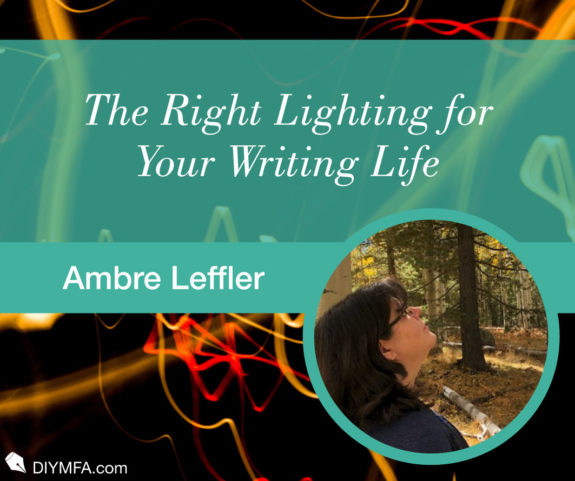As I write this article, I am in the company of my two spider plants. They live in a corner where they get some light from the overhead tape LEDs when I work during the day. My office does not have a window for them to receive direct daylight. They are surviving but not necessarily thriving. Plants, like people, need a balance of the right kind of light to grow successfully.
Writers are often set up with an improper balance of light. For those of us with a day job, we use borrowed space on public transportation or a spare bedroom to squeeze in writing time. For those who write full-time, it is easy to lose track of the hours while churning out a chapter. Reading is sometimes crammed in before bed, either with an e-reader or by lamplight. My compact fluorescent bulb is woefully underpowered for reading.
Improper lighting not only affects your eyes, it also directly impacts your overall health.
Writers would benefit greatly in learning to synchronize with the sun like a cat. My cat maps out her day according to the sun. She knows exactly which spot gets the best sunlight throughout the day. Your circadian rhythm synchronizes your body with the external world relative to light. This rhythm is a 24-hour cycle of each organ’s optimum time to function.
Photoreceptor cells in your eyes that are sensitive to blue light relay environmental light levels to your brain. This process sets your central circadian clock, which then synchronizes the local clocks in the rest of your body. Think of the clock tower in the village square, and how clocks in the village shops synchronize to this one clock for the entire village.
Cortisol levels are also controlled by the circadian rhythm in a 24-hour cycle. They rise in the early morning, then increase toward waking time. The brain gradually wakes up, a process that can take up to four hours. This sleep inertia varies from person to person. I know I am not able to eat breakfast until I have been awake for two hours.
Circadian rhythm, cortisol, and melatonin all directly impact your quality of sleep. Chronic sleep disorders elevate the risk of diabetes, obesity, depression, heart attack, hypertension, and stroke.
Lighting During the Day
A healthy lighting plan starts at waking time. If possible, go outside first thing in the morning for 15 minutes. Natural daylight is needed to process vitamin D, set your internal clock, and cue melatonin. Melatonin is the biochemical signal of darkness that tells the brain it is night time. Seeing daylight early in the morning sets your melatonin clock for sleep later.
It is important to work in a brightly-lit space during the day. If your work environment is poorly lit during the day, you are more sensitive to light exposure at night. Take sunlight breaks. Use one 15-minute block from the Pomodoro technique to get some natural light. It is also important to keep computers 14” from your face and use a lower brightness setting with your screen to reduce melatonin disruption.
Lighting After Dusk
Light after dusk resets your circadian clock, suppresses melatonin, elevates heart rate and body temperature, and directly stimulates your brain. The blue light from computers, phones, and tablets tells your brain it is daylight. This disrupts your circadian rhythm and with it, your sleep cycle. In the evening, gradually dim and redden the light.
Apps such as f.lux warm up the color temperature of your screen in sync with the sunset for your location, time of year, and when you wake up. It will also coordinate with your home smart lighting system. Windows has a nightlight setting that adjusts the monitor to warmer colors after dusk. You can also try blue light-blocking reading glasses. Start shutting down your computer at least 30 minutes before bed. If you prefer a bedside alarm clock, pick one with red digital numbers, not blue or green.
Lighting for Your Writing Space
Not sure how to light your space? I have put together a guide to proper lighting for your workspace which you can access here. In it you will find an explanation of lighting terms and recommendations for lighting levels. Print it to take with you to the lighting store or for reference when shopping online.
With the right lighting you will have a healthy and productive writing life.

Ambre Dawn Leffler is a Tai Chi instructor, gardener, and weather geek who writes about vegetables, seasons, communing with nature, and the interconnections of mind/body. She loves trees and cherishes time in their presence. Learn more about her tree time, garden residents, and wellness practices at her website ambredawnleffler.com and seasonal inspiration from her newsletter Sky Earth Water. You can also follow her on Twitter and Instagram.







